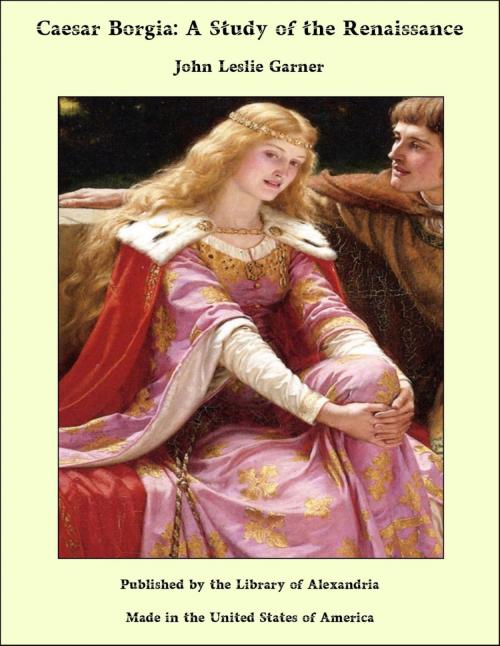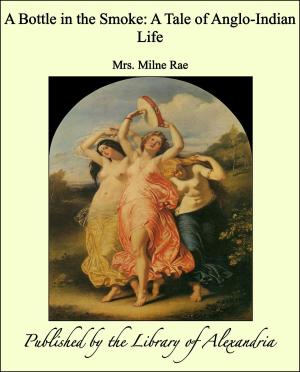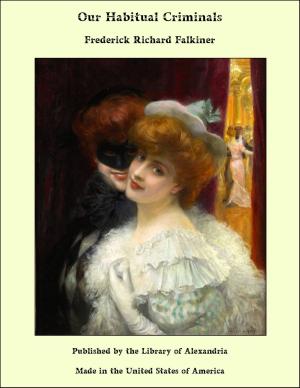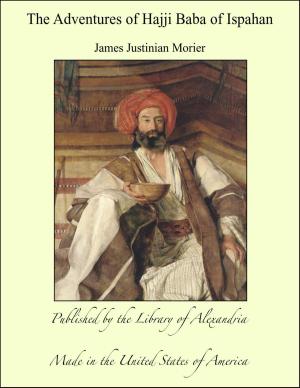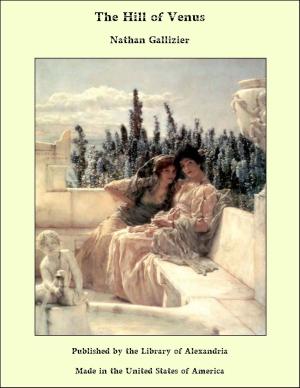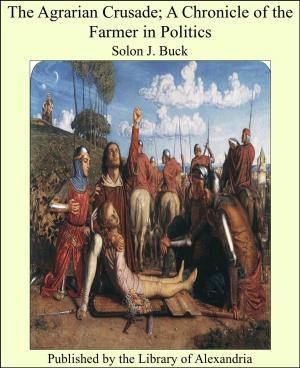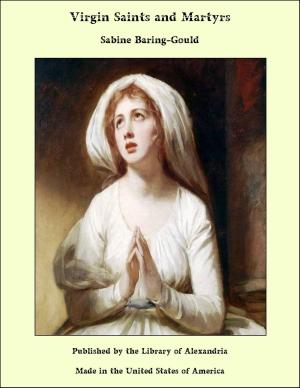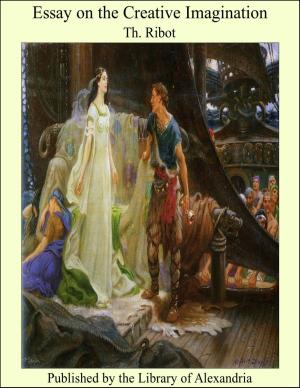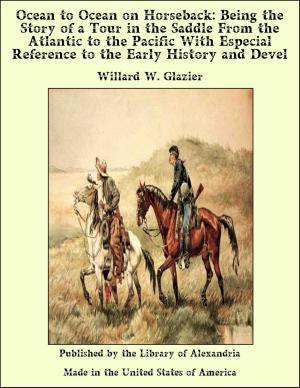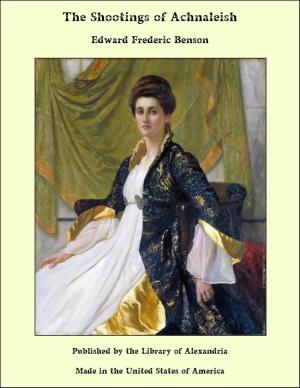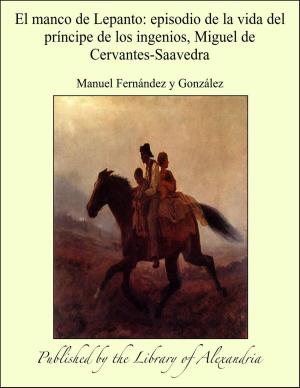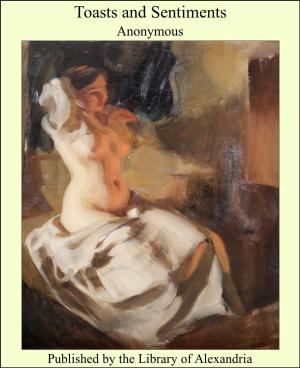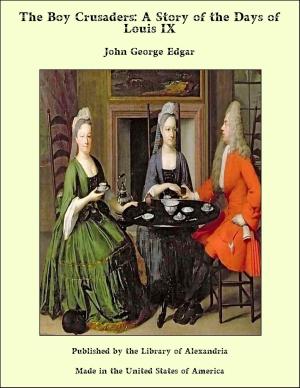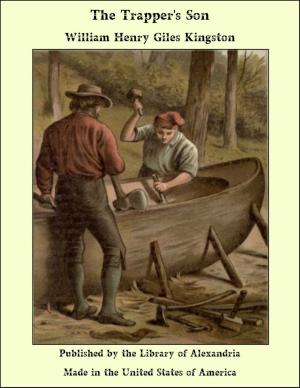Caesar Borgia: A Study of the Renaissance
Nonfiction, Religion & Spirituality, New Age, History, Fiction & Literature| Author: | John Leslie Garner | ISBN: | 9781465620460 |
| Publisher: | Library of Alexandria | Publication: | March 8, 2015 |
| Imprint: | Language: | English |
| Author: | John Leslie Garner |
| ISBN: | 9781465620460 |
| Publisher: | Library of Alexandria |
| Publication: | March 8, 2015 |
| Imprint: | |
| Language: | English |
Possessing a mild climate and a fertile soil, Italy from the earliest times has attracted the invader, the adventurer. Extending out into the Mediterranean, she has been exposed to attacks on all sides, and when the Roman Empire, disintegrated by its own corruption and wickedness, had passed away, no strong central power was left to repel the marauders who swarmed into the peninsula from all sides. The rich plains of the north attracted the Teutonic tribes who established the Lombard Kingdom, and from the south came the Arabs, bringing their arts and crafts to Sicily. To the Orient the merchants of Venice went for their perfumes, their spices, their gorgeous stuffs, their stamped leathers, and with them they brought back much of the civilisation of the Far East. Owing to her geographical position, to conditions resulting from her past history, and the prizes she offered the bold and unscrupulous, Italy at an early date became the battle-ground of Europe. Human ambitions and energies now have the entire globe for their field, but before America was discovered little was known of either Africa or Asia, consequently civilisation was almost entirely restricted to Western Europe. Italy was a seething cauldron of life and activity, and there sprang into being a race of strong, many-sided individuals. Like Spain, she became, in the fifteenth and sixteenth centuries, a land of mighty personalities, of men of varied gifts and vast energy. While Spain gave the world Cortez, Murillo, Velazquez, Calderon, Charles V., Loyola, Alva, and Gonsalvo de Cordova, Italy produced Columbus, Michael Angelo, Raphael, Ariosto, Ludovico il Moro, St. Francis, Prospero Colonna, and Julius II. Students have ever been fascinated by those periods in the world’s history which have been characterised by unusual activity in the domains of art, letters, science, and politics. The marvellous flowering in architecture and sculpture in the age of Pericles, in poetry and the drama in the time of Elizabeth, and in all the arts during the vaguely defined period of the Italian Renaissance have never ceased to baffle the historian and the psychologist. Professor Gebhart, in a work of great erudition has endeavoured to account for the civilisation of the Italian Renaissance by reference to “the inherent characteristics of the Italian soul; to certain great and persistent tendencies in her intellectual life, and to certain facts in her political career—causes which affect the entire life of the people; some of which were remote in time, but of lasting effect, while others were recent and transitory.” In all fields of worthy human endeavour men in Italy had constantly before them the inspiration of splendid achievement; but they were also confronted by examples of evil, vast and successful, reaping material rewards such as rarely fall to the lot of virtue. Throughout Italy, in the age of the Borgia, impudent but brave and crafty adventurers were establishing princely houses, enjoying boundless dominion and wealth—and could their example have been lost on Alexander VI. and Caesar Borgia? The Renaissance in Italy was much more than a revival in literature and the graphic arts; it was the supreme development of Italian civilisation as a whole, the most perfect expression of the genius and intellectual life of the peninsula. The chief causes of the Italian Renaissance, causes inherent in Italy herself, were, above all, liberty of the individual mind and social freedom. The persistence of Latin traditions, and the ever-present memory of Greece were likewise potent factors; while the language reached maturity at exactly the right moment.
Possessing a mild climate and a fertile soil, Italy from the earliest times has attracted the invader, the adventurer. Extending out into the Mediterranean, she has been exposed to attacks on all sides, and when the Roman Empire, disintegrated by its own corruption and wickedness, had passed away, no strong central power was left to repel the marauders who swarmed into the peninsula from all sides. The rich plains of the north attracted the Teutonic tribes who established the Lombard Kingdom, and from the south came the Arabs, bringing their arts and crafts to Sicily. To the Orient the merchants of Venice went for their perfumes, their spices, their gorgeous stuffs, their stamped leathers, and with them they brought back much of the civilisation of the Far East. Owing to her geographical position, to conditions resulting from her past history, and the prizes she offered the bold and unscrupulous, Italy at an early date became the battle-ground of Europe. Human ambitions and energies now have the entire globe for their field, but before America was discovered little was known of either Africa or Asia, consequently civilisation was almost entirely restricted to Western Europe. Italy was a seething cauldron of life and activity, and there sprang into being a race of strong, many-sided individuals. Like Spain, she became, in the fifteenth and sixteenth centuries, a land of mighty personalities, of men of varied gifts and vast energy. While Spain gave the world Cortez, Murillo, Velazquez, Calderon, Charles V., Loyola, Alva, and Gonsalvo de Cordova, Italy produced Columbus, Michael Angelo, Raphael, Ariosto, Ludovico il Moro, St. Francis, Prospero Colonna, and Julius II. Students have ever been fascinated by those periods in the world’s history which have been characterised by unusual activity in the domains of art, letters, science, and politics. The marvellous flowering in architecture and sculpture in the age of Pericles, in poetry and the drama in the time of Elizabeth, and in all the arts during the vaguely defined period of the Italian Renaissance have never ceased to baffle the historian and the psychologist. Professor Gebhart, in a work of great erudition has endeavoured to account for the civilisation of the Italian Renaissance by reference to “the inherent characteristics of the Italian soul; to certain great and persistent tendencies in her intellectual life, and to certain facts in her political career—causes which affect the entire life of the people; some of which were remote in time, but of lasting effect, while others were recent and transitory.” In all fields of worthy human endeavour men in Italy had constantly before them the inspiration of splendid achievement; but they were also confronted by examples of evil, vast and successful, reaping material rewards such as rarely fall to the lot of virtue. Throughout Italy, in the age of the Borgia, impudent but brave and crafty adventurers were establishing princely houses, enjoying boundless dominion and wealth—and could their example have been lost on Alexander VI. and Caesar Borgia? The Renaissance in Italy was much more than a revival in literature and the graphic arts; it was the supreme development of Italian civilisation as a whole, the most perfect expression of the genius and intellectual life of the peninsula. The chief causes of the Italian Renaissance, causes inherent in Italy herself, were, above all, liberty of the individual mind and social freedom. The persistence of Latin traditions, and the ever-present memory of Greece were likewise potent factors; while the language reached maturity at exactly the right moment.
